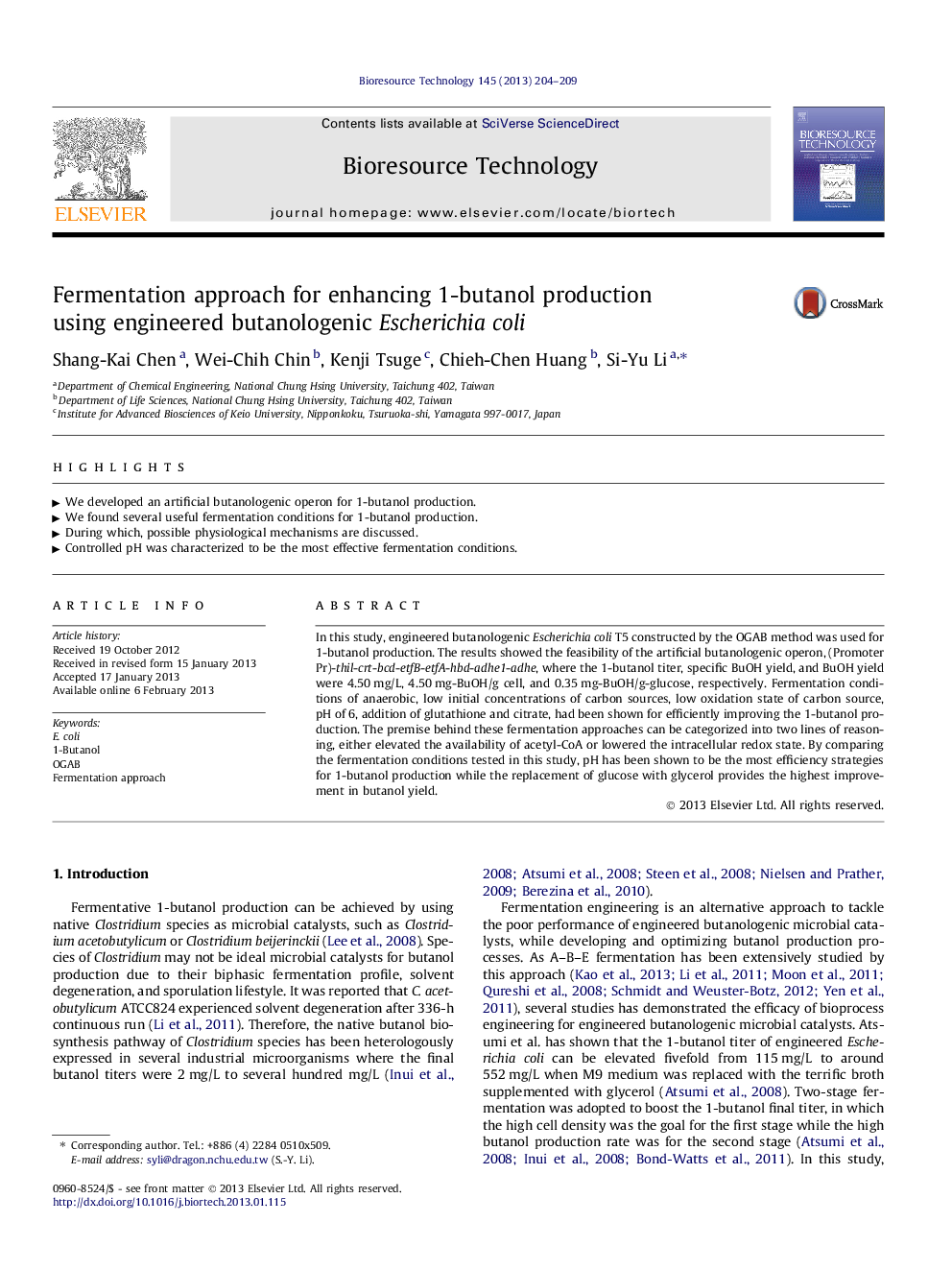| Article ID | Journal | Published Year | Pages | File Type |
|---|---|---|---|---|
| 681048 | Bioresource Technology | 2013 | 6 Pages |
In this study, engineered butanologenic Escherichia coli T5 constructed by the OGAB method was used for 1-butanol production. The results showed the feasibility of the artificial butanologenic operon, (Promoter Pr)-thil-crt-bcd-etfB-etfA-hbd-adhe1-adhe, where the 1-butanol titer, specific BuOH yield, and BuOH yield were 4.50 mg/L, 4.50 mg-BuOH/g cell, and 0.35 mg-BuOH/g-glucose, respectively. Fermentation conditions of anaerobic, low initial concentrations of carbon sources, low oxidation state of carbon source, pH of 6, addition of glutathione and citrate, had been shown for efficiently improving the 1-butanol production. The premise behind these fermentation approaches can be categorized into two lines of reasoning, either elevated the availability of acetyl-CoA or lowered the intracellular redox state. By comparing the fermentation conditions tested in this study, pH has been shown to be the most efficiency strategies for 1-butanol production while the replacement of glucose with glycerol provides the highest improvement in butanol yield.
► We developed an artificial butanologenic operon for 1-butanol production. ► We found several useful fermentation conditions for 1-butanol production. ► During which, possible physiological mechanisms are discussed. ► Controlled pH was characterized to be the most effective fermentation conditions.
